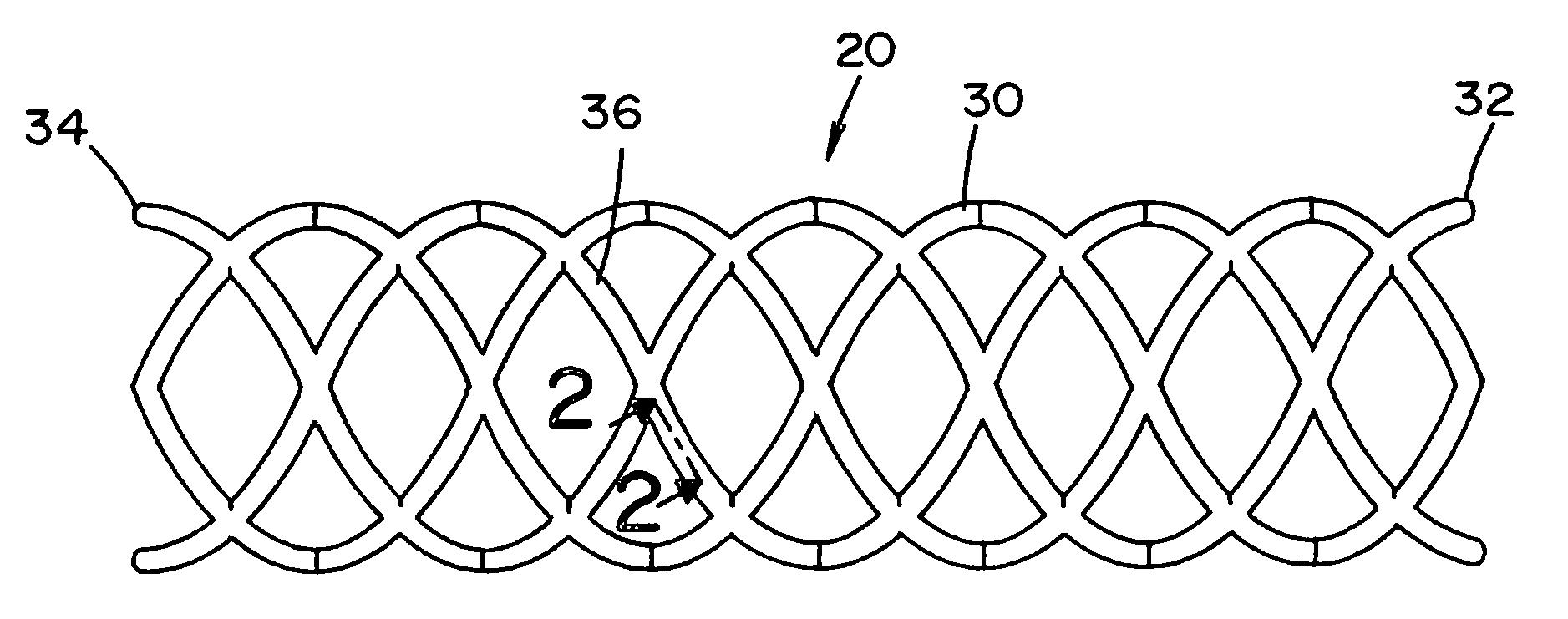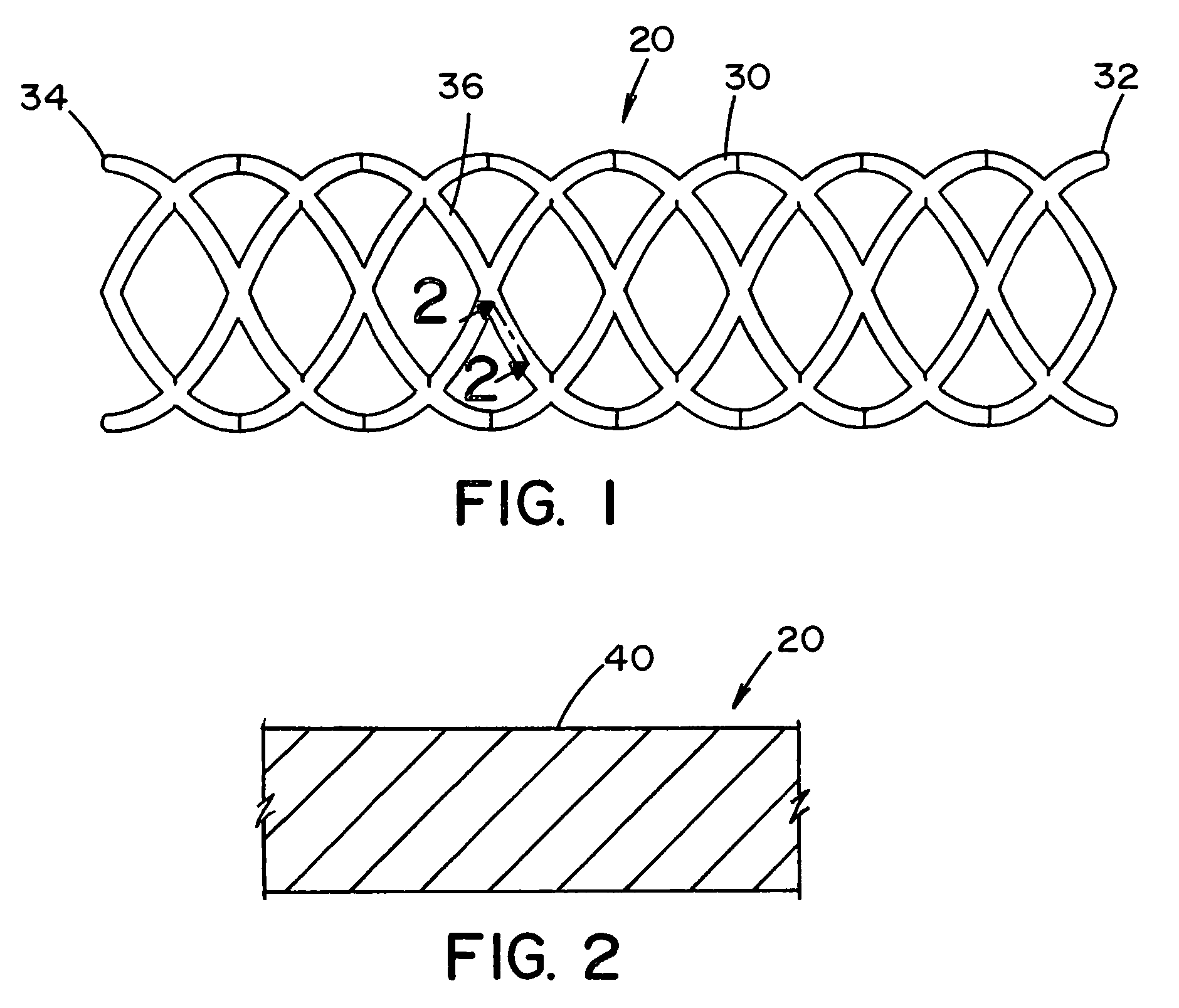Metal alloy for a stent
a technology of metal alloys and stents, applied in the field of metal alloys for stents, can solve the problems of limited physical performance characteristics of materials such as size, strength, weight, bendability, biostability, etc., and achieve the effects of improving physical properties, reducing the risk of fracture, and improving the strength of materials
- Summary
- Abstract
- Description
- Claims
- Application Information
AI Technical Summary
Benefits of technology
Problems solved by technology
Method used
Image
Examples
Embodiment Construction
[0041]Referring now to the drawings wherein the showings are for the purpose of illustrating embodiments of the invention only and not for the purpose of limiting the same, FIGS. 1-2 disclose a medical device in the form of a stent for use in a body passageway. The stent of the present invention can be at least partially formed of a novel metal alloy having improved physical properties. The novel metal alloy used to at least partially form the stent improves one or more properties (e.g., strength, durability, hardness, biostability, bendability, coefficient of friction, radial strength, flexibility, tensile strength, tensile elongation, longitudinal lengthening, stress-strain properties, improved recoil properties, radiopacity, heat sensitivity, biocompatibility, etc.) of such stent. In some instances, the use of the novel metal alloy can reduce the volume, bulk and / or weight of the stent as compared to prior stents made from traditional materials; however, this is not required. The...
PUM
| Property | Measurement | Unit |
|---|---|---|
| tensile elongation | aaaaa | aaaaa |
| ultimate tensile strength | aaaaa | aaaaa |
| yield strength | aaaaa | aaaaa |
Abstract
Description
Claims
Application Information
 Login to View More
Login to View More - R&D
- Intellectual Property
- Life Sciences
- Materials
- Tech Scout
- Unparalleled Data Quality
- Higher Quality Content
- 60% Fewer Hallucinations
Browse by: Latest US Patents, China's latest patents, Technical Efficacy Thesaurus, Application Domain, Technology Topic, Popular Technical Reports.
© 2025 PatSnap. All rights reserved.Legal|Privacy policy|Modern Slavery Act Transparency Statement|Sitemap|About US| Contact US: help@patsnap.com


